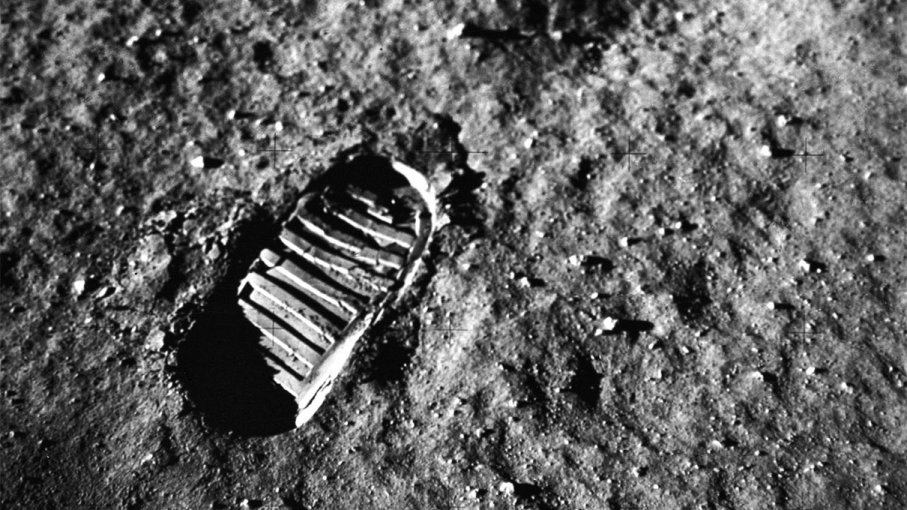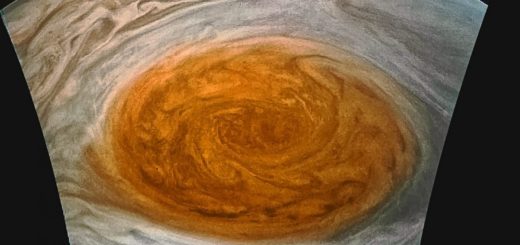Did the Apollo Missions Cause Warming on the Moon?

During the Apollo 15 and Apollo 17 missions to the moon in 1971 and 1972, astronauts drilled holes in the lunar surface and placed probes there, in an effort to measure the moon’s subsurface temperature and quantify how much heat moves from the lunar core to the surface. But after they did, scientists back on Earth noticed a strange phenomenon. The lunar regolith — that is, the layer of soil and rock fragments covering the surface — began to rise in temperature and continued to do so for several years afterward. No one was sure why, though some scientists believed it might have been caused by some sort of natural phenomenon, while others suspected the astronauts themselves might have triggered it.
It now looks as if the astronauts were indeed responsible. In a paper published on April 25, 2018 in the Journal of Geophysical Research, a journal of the American Geophysical Union (AGU), researchers use data gleaned from long-lost NASA tapes, photos taken by the astronauts, imagery from a lunar orbiter and other records to make the case that the increase in the lunar surface temperature around the probes of 1 to 2 degrees Celsius — 1.8 to 3.6 degrees Fahrenheit — probably was caused by human activity.
As this blog post by AGU science writer Lauren Lipuma explained, by walking around and driving a rover, the astronauts apparently disturbed the regolith, causing it to become darker. That, in turn, caused the lunar surface in those areas to reflect less solar radiation back into space, and instead absorb it, heating the surface.
Tracking Down the NASA Tapes
In order to come up with proof to support that scenario, scientists needed to do years of scientific detective work. Lead author Seiichi Nagihara, an associate professor of geophysics at Texas Tech University, and colleagues spent years looking for long-lost tapes of data that had been transmitted from the instruments left behind on the moon.
As Nagihara explains in an email, the published data from the Apollo heat flow experiment, which showed a surface temperature increase, only covered the period from 1971 to 1974. But Nagihara knew that the experiment actually had lasted through September 1977. “I wanted to know if this warming continued till the end,” he writes.
But the tapes that contained that information were missing. “When we started, we did not know if these tapes still existed,” Nagihara says. “We spent a couple of years interviewing people who were involved in the Apollo program and going through the memos and reports from that period.”
As Lipuma’s blog post details, the researchers finally discovered that NASA had created a separate set of tapes, specifically for archiving. Eventually they located 440 of the tapes, covering a period from April through June 1975, gathering dust at the Washington National Records Center in Suitland, Maryland, a part of the National Archives which stores records from various federal agencies.
Recovering the Data
But that was just the start of the work. “The degradation of these tapes was a serious problem,” Nagihara explains. “We worked with companies who have expertise in recovering data from old degraded magnetic tapes. Another major challenge was to process the data recovered from these tapes. These tapes recorded electronic measurements (e.g., voltage readings of various sensors) output from the various instruments left on the moon. So, we had to separate them out into the data sets for the individual instruments, and then process them into scientifically meaningful numbers such as temperatures. Again, we went through numerous memos and reports in figuring out these processing steps. That took another several years.”
The researchers combined data from the tapes with information from hundreds of weekly logs from the Lunar and Planetary Institute in Houston. That enabled them to reconstruct temperature readings for gaps in the tapes from January through March 1975 and July 1975 through February 1976, the point at which the probes were near the end of their life cycle, according to Lipuma’s blog post.
When the researchers analyzed the data, they found that the probes that were closer to the surface showed the temperature rising more quickly and higher than deeper-buried probes. That indicated that the heat actually started at the surface, rather than beneath it.
The Darkened Regolith
When the scientists looked at pictures of the landing sites taken by the Lunar Reconnaissance Orbiter , they saw that the soil around the sites where the astronauts implanted the probes was darker than surrounding undisturbed areas, which would decrease the amount of solar radiation reflected back into space. Photographs taken by the astronauts during the missions also show footprints and other changes their presence made in the surface.
Walter Kiefer, a staff scientist at the Lunar and Planetary Institute and one of Nagihara’s co-authors, explains in an email that the heating effect “was quite localized. It only occurred where the astronauts’ activities were concentrated, particularly along their foot tracks (or rover tracks), and where they did extensive work collecting samples and deploying experiments. The largest affected area was most likely the experiment deployment area, which was 20-30 meters (66-98 feet) across and worked in extensively. The regolith (soil) was darkened in those places, and the heating would slowly propagate downward over time.
“However, areas to the side that were not walked on would be cooler and could help to minimize the heat propagating downward. For that reason, I expect that the overall effect will not extend very deep, but we have not calculated this in detail.”
In the paper, the researchers note that future heat-flow measurements on the moon should take into account the effect of deploying the probes. But other than that, the warming effect wasn’t that significant an alteration of the lunar environment. Kiefer says that astronauts’ activity around a future lunar base might have the same effect, but that the temperature increase would be slight and probably wouldn’t penetrate very far.
As Nagihara explains, the recovered tapes contain data from all the instruments that the Apollo astronauts deployed on the moon, and there’s more to be learned from them. “I used only the data from the heat flow experiments,” he writes. “The tapes have data from many other experiments. We are processing data from these other experiments as well, archiving them with NASA’s data repositories, and making them available to other planetary researchers. For example, by analyzing the data from these tapes, one of my colleagues discovered there have been more moon quakes than previously reported.”



 Creators of mankind
Creators of mankind Description of “Tall white aliens”
Description of “Tall white aliens” Where they came from?
Where they came from? About hostile civilizations
About hostile civilizations The war for the Earth
The war for the Earth “Tall white aliens” about eternal life
“Tall white aliens” about eternal life Video: “Nordic aliens”
Video: “Nordic aliens” Aliens
Aliens Alien encounters
Alien encounters The aliens base
The aliens base UFO
UFO Technology UFO
Technology UFO Underground civilization
Underground civilization Ancient alien artifacts
Ancient alien artifacts Military and UFO
Military and UFO Mysteries and hypotheses
Mysteries and hypotheses Scientific facts
Scientific facts


















